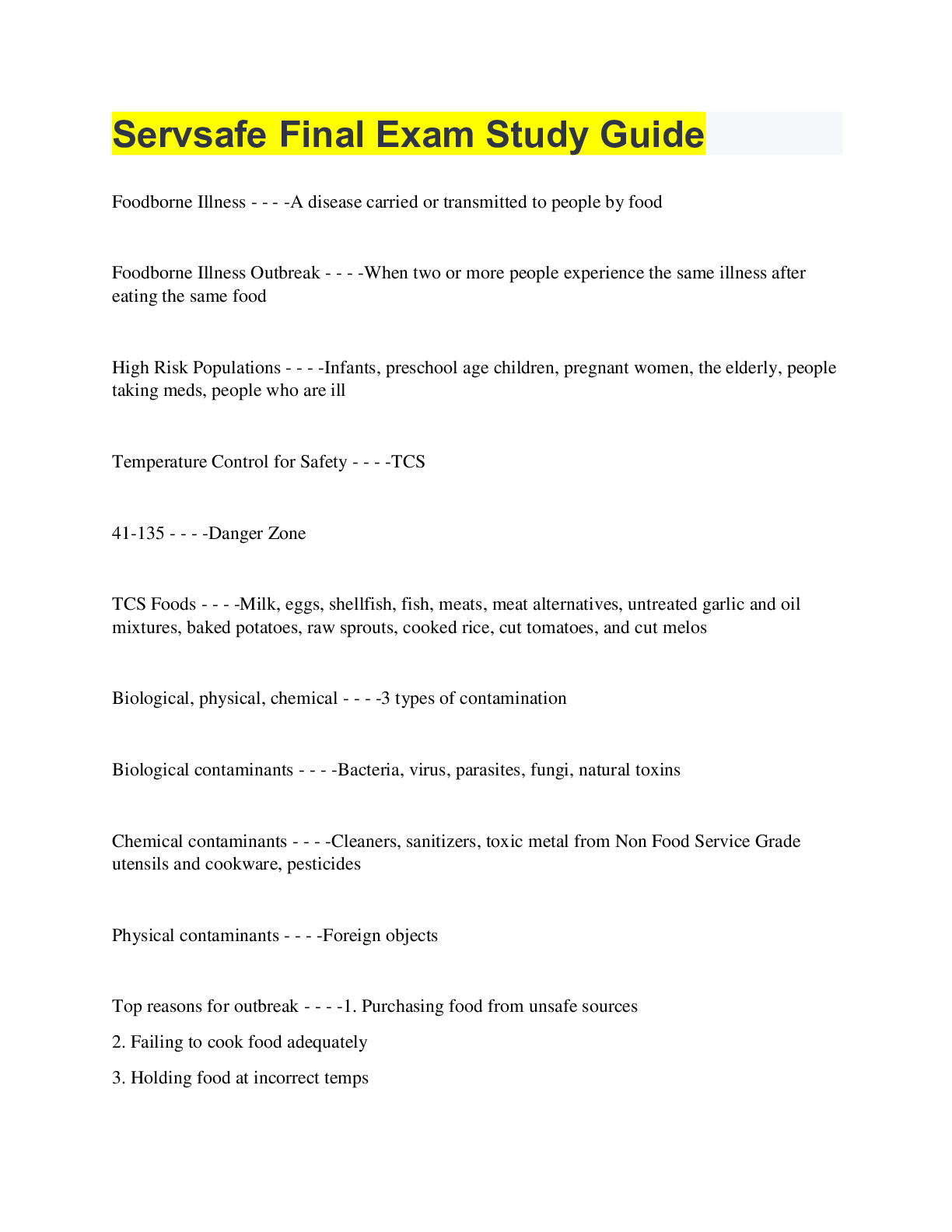*NURSING > QUESTIONS & ANSWERS > PATHOPHYSIOLOGY 370 FINAL EXAM STUDY GUIDE (All)
PATHOPHYSIOLOGY 370 FINAL EXAM STUDY GUIDE
Document Content and Description Below
PATHOPHYSIOLOGY 370 FINAL EXAM STUDY GUIDE Chapter 1: 1. Etiology: study of causes or reasons for a particular injury. Idiopathic (unknown) vs Iatrogenic (unintended/unwanted medical treatment). R... isk Factor: a factor that increases the likelihood of disease. 2. Pathogenesis: development or evolution of disease from initial stimulus to ultimate expression of manifestations of the disease. 3. Clinical Manifestations: Signs (objective) vs Symptoms (subjective). 4. Stages and Clinical Course: Latent period (time between exposure of tissue to injurious agent, first appearance of S&S), Prodromal period (indicating onset of disease), Acute phase (disease/illness reaches its full intensity). 5. Acute clinical course: short-lived, may have severe manifestations. 6. Chronic clinical course: may last months to years, sometimes follows an acute course. 7. Treatment implications: understanding the etiology, pathogenesis, and clinical consequences of a particular disorder/disease/illness may determine which treatments could be helpful. 8. Considerations: culture, age, gender, situation, time. 9. Levels of Prevention: Primary: altering susceptibility or reducing exposure for susceptible persons (vaccination). Secondary: early detection, screening, and management of disease. Tertiary: rehabilitation, supportive care, reducing disability, and restoring effective functioning. 10.Subclinical: disease that has no recognizable clinical findings. Distinct from a clinical disease which has S&S that can be recognized. Subclinical disease ex. Diabetes, hypothyroidism, RA until they turn into clinical diseases. Chapter 2: 1. Homeostasis: ideal set point; response: mechanistic, predictable series of orchestrated internal events. 2. Types of parameters to control: osmolarity, temperature, pH, nutrients, water, Na+, Ca2+, oxygen, hormones. 3. Allostasis: ability to adapt to challenges; maintains or reestablishes homeostasis in light of environmental and lifestyle changes. 4. Stressors: agents or conditions that endanger homeostasis (physical, chemical, emotional, biological, social, or cultural; vary in scope, intensity, and duration. 5. Feedback control systems adapt to changes to restore homeostasis. 6. Stress can be beneficial: increase ene [Show More]
Last updated: 1 year ago
Preview 1 out of 57 pages

Reviews( 0 )
Document information
Connected school, study & course
About the document
Uploaded On
Jul 02, 2022
Number of pages
57
Written in
Additional information
This document has been written for:
Uploaded
Jul 02, 2022
Downloads
0
Views
30

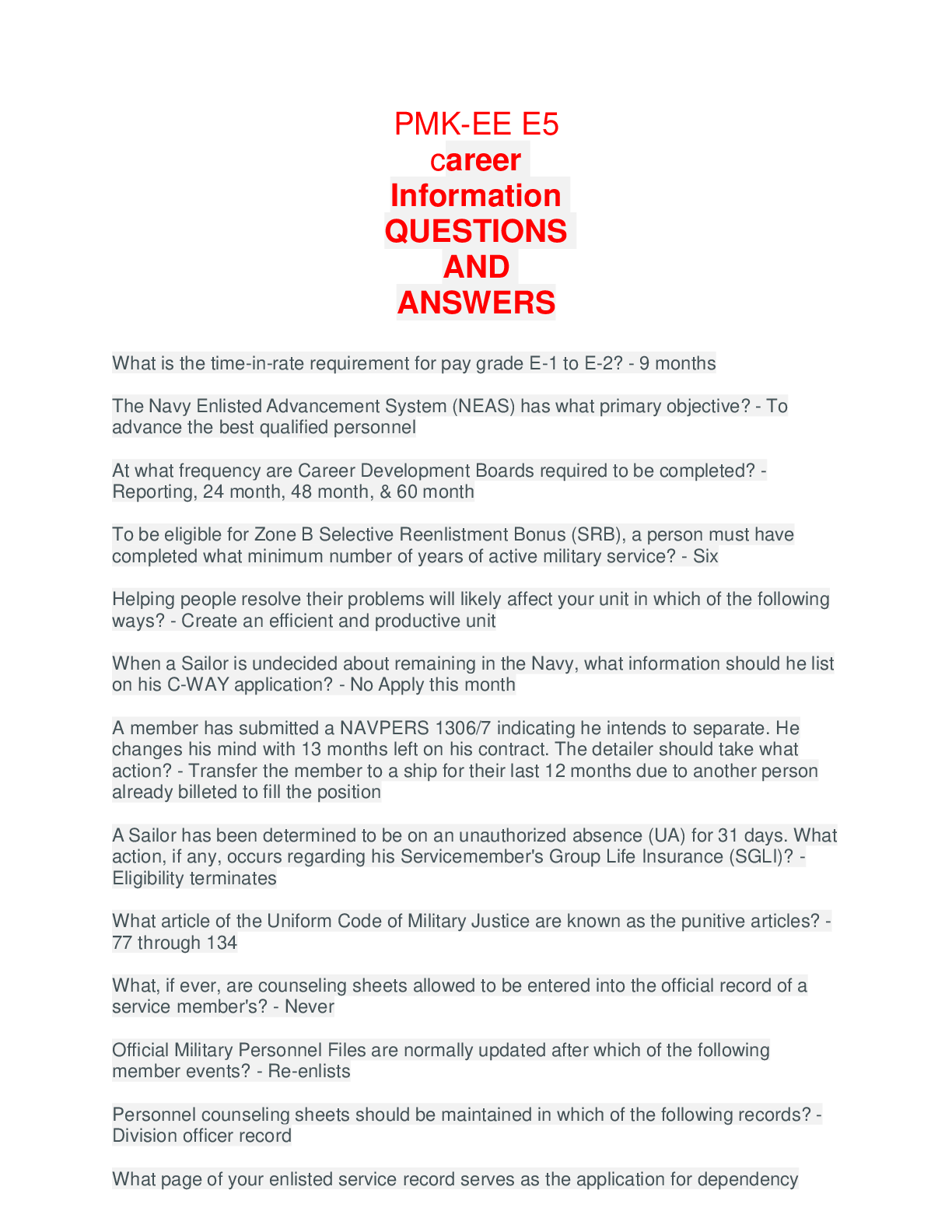
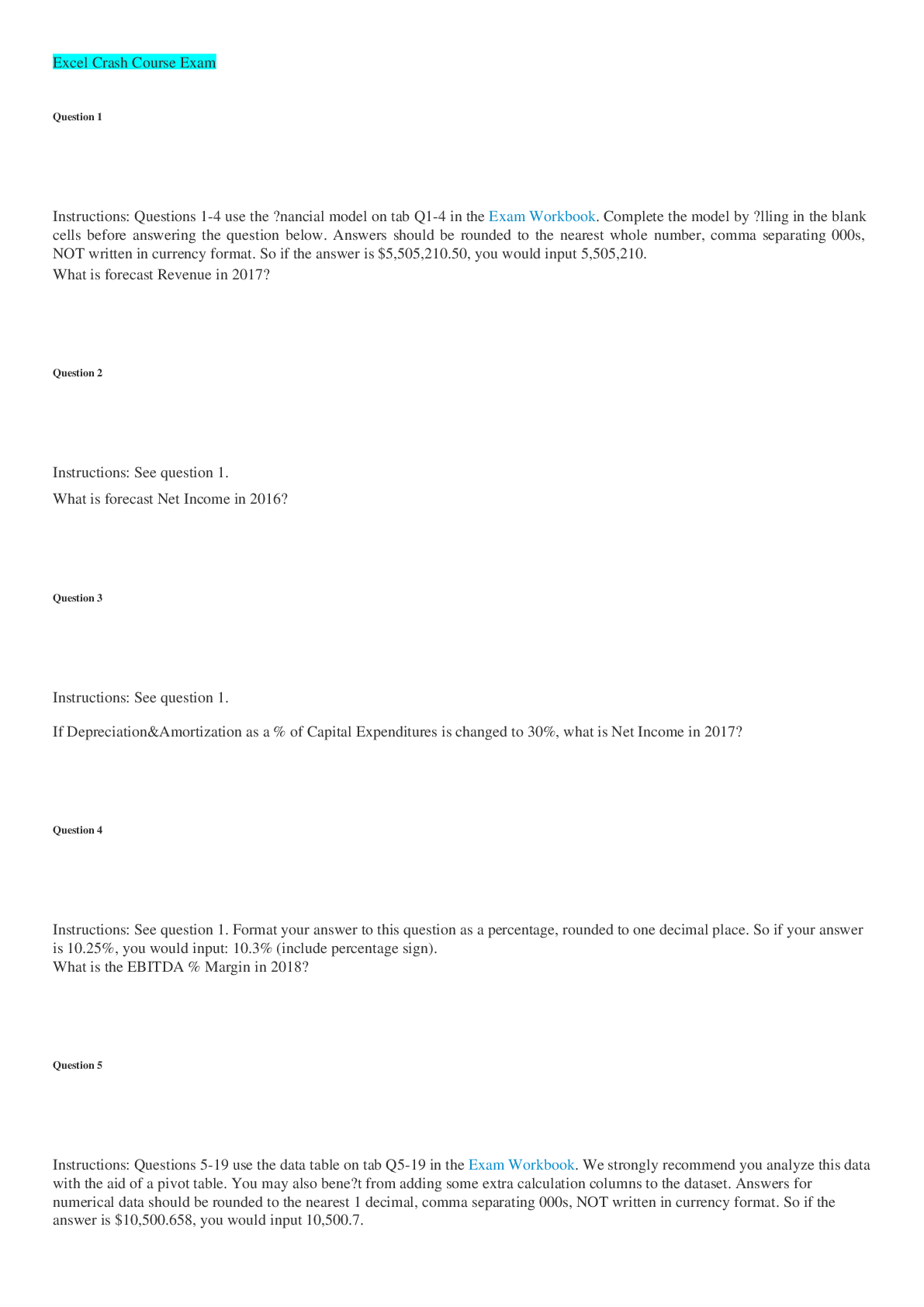
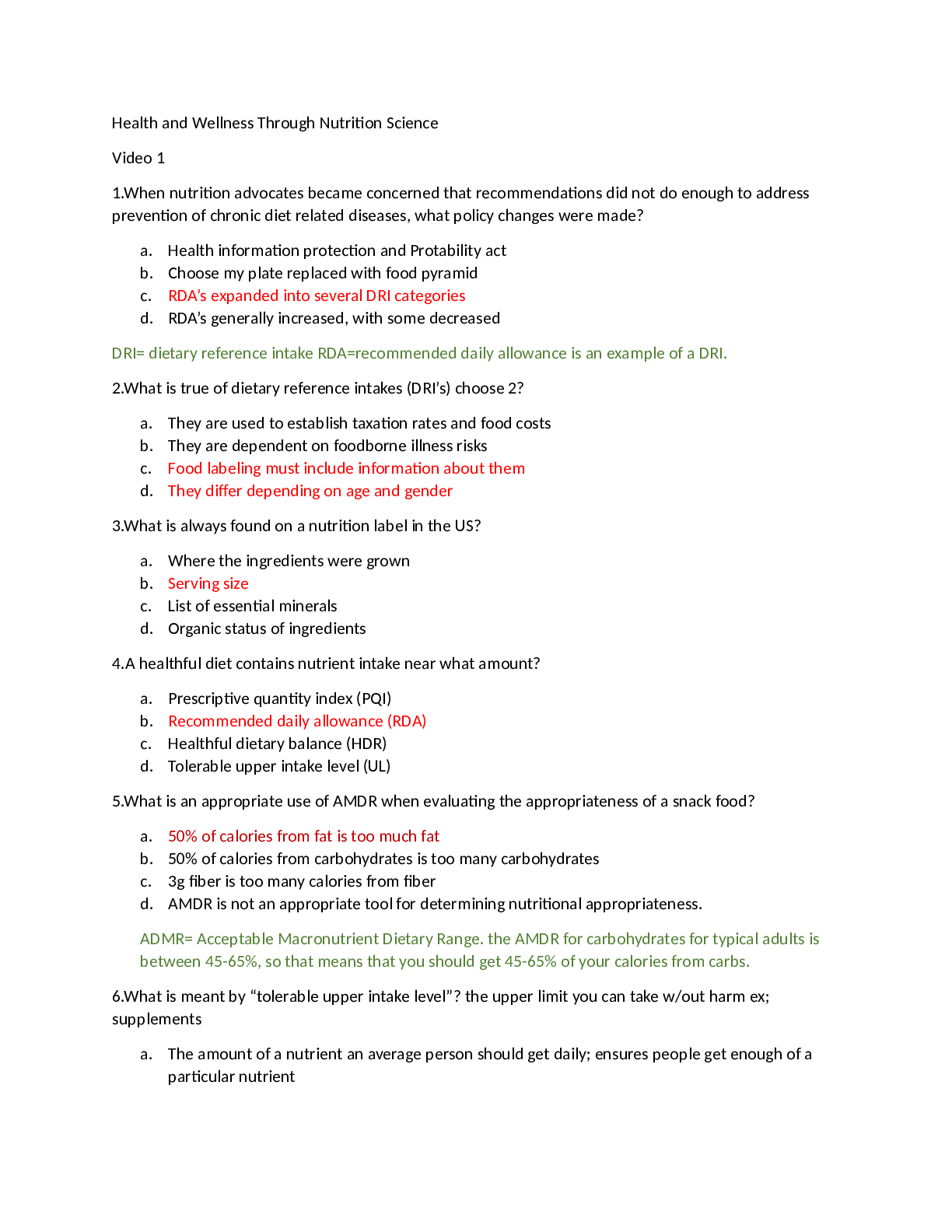


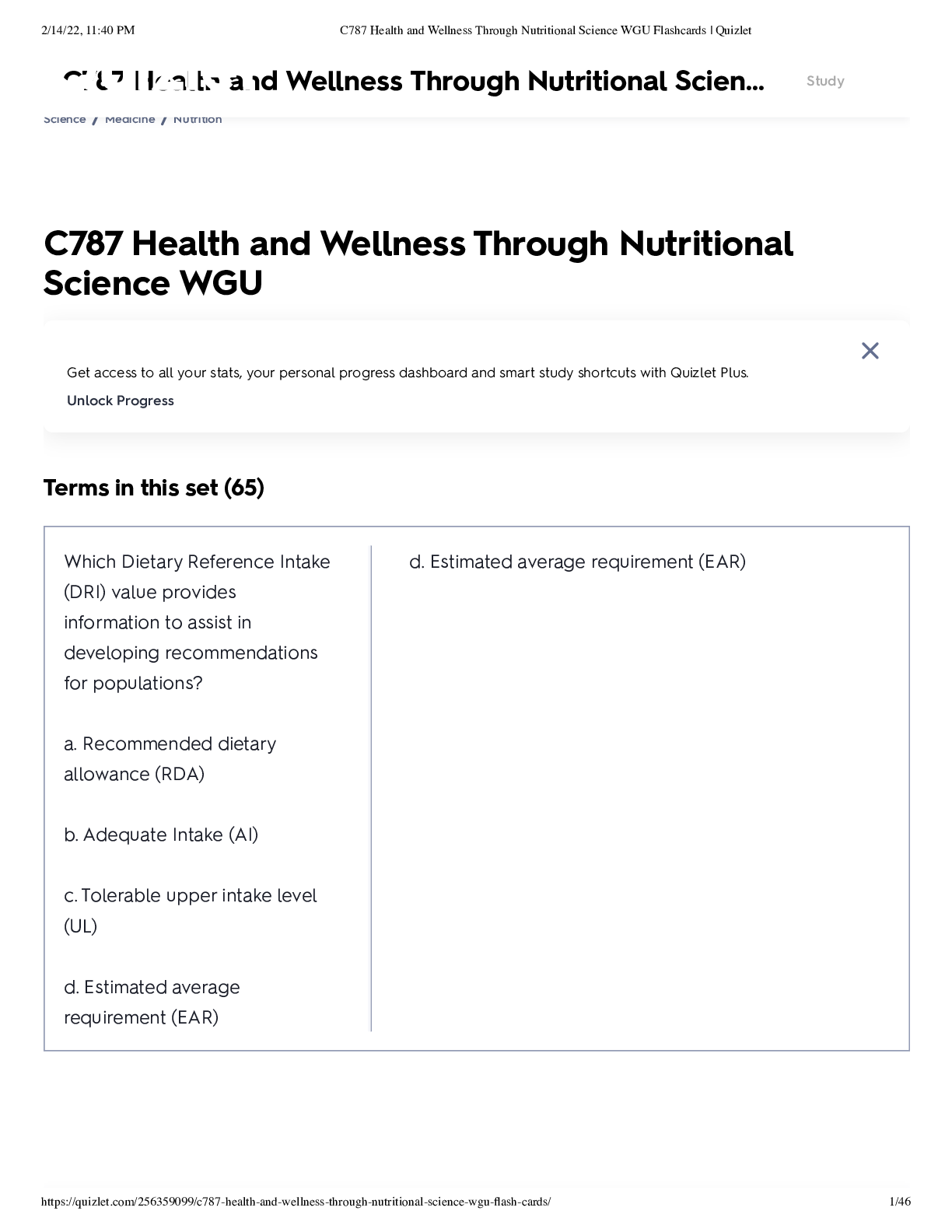
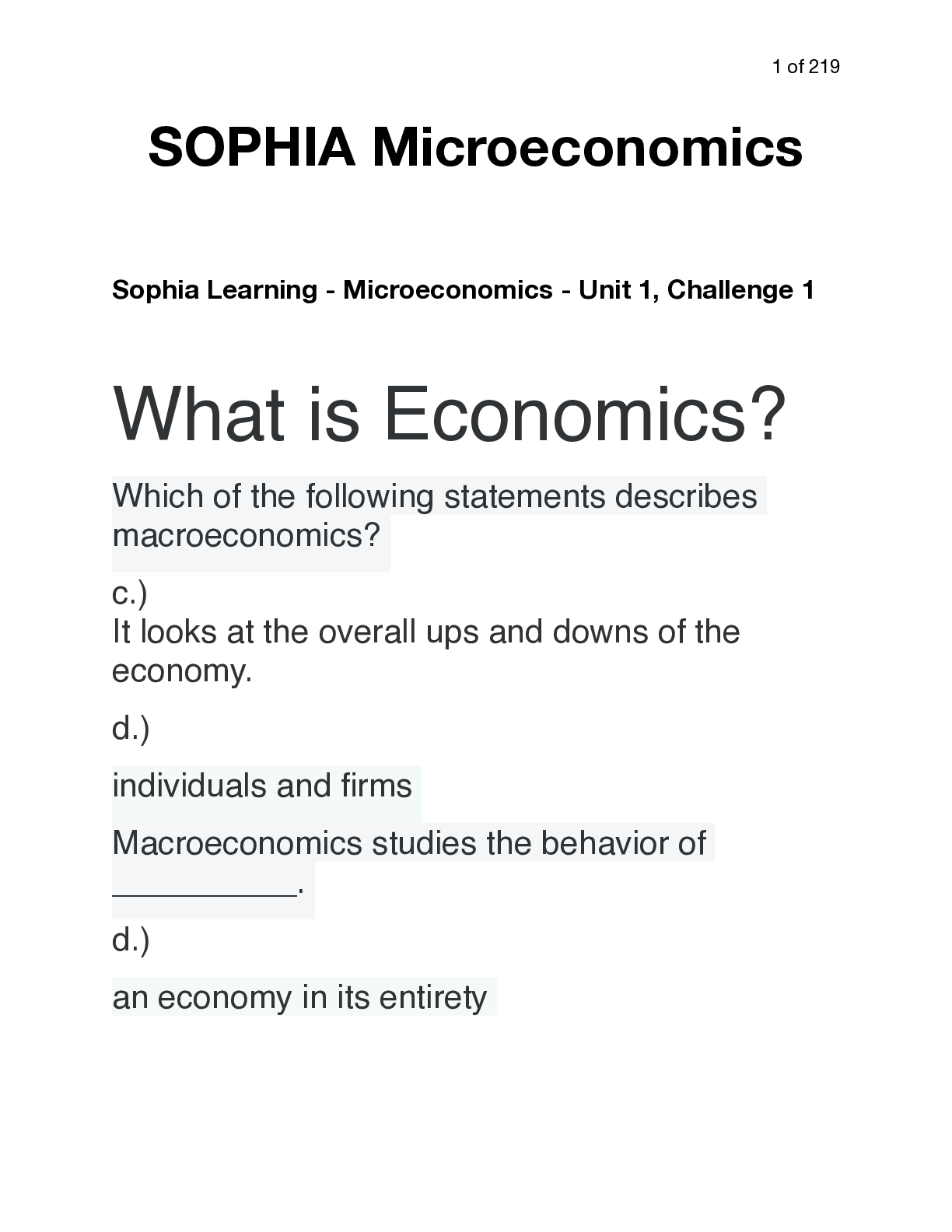
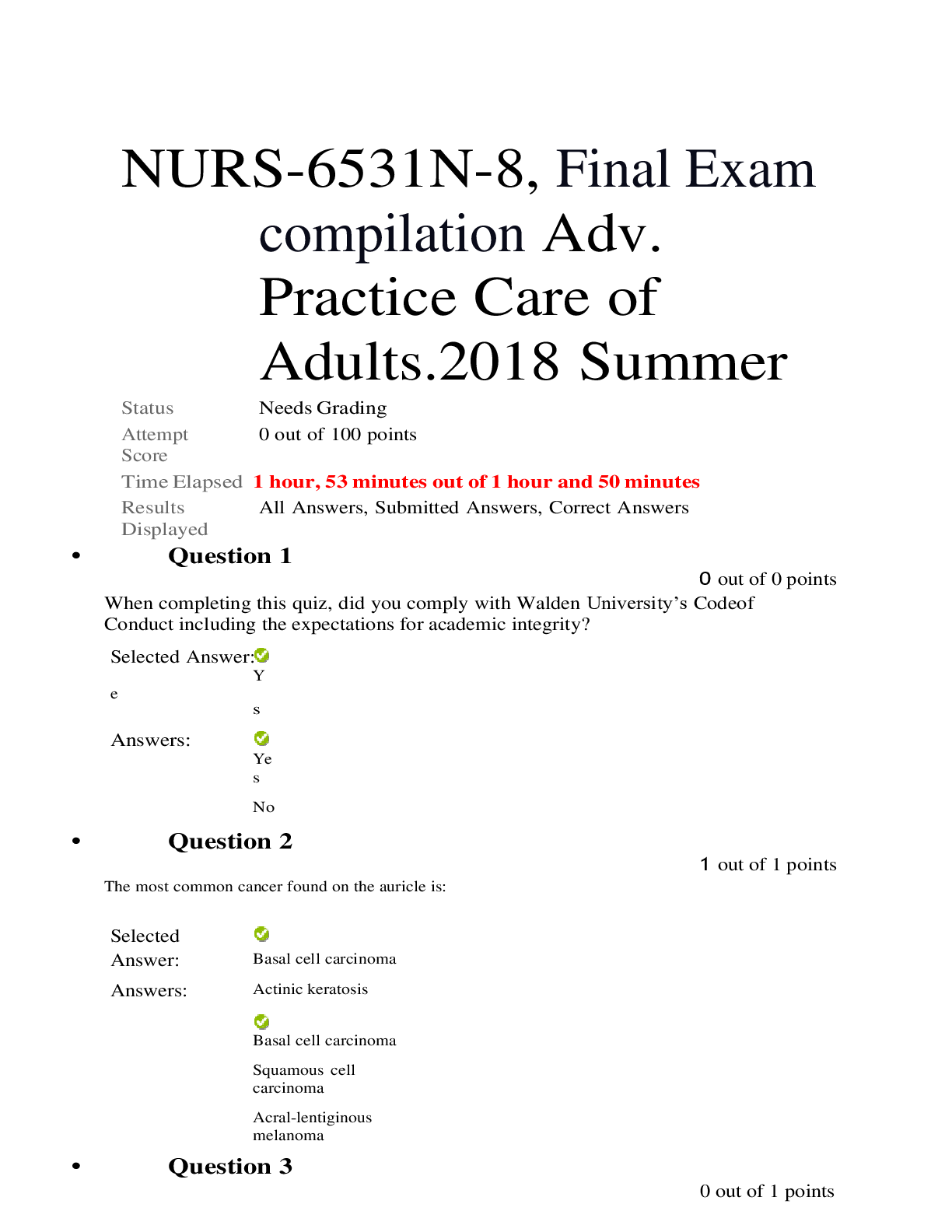
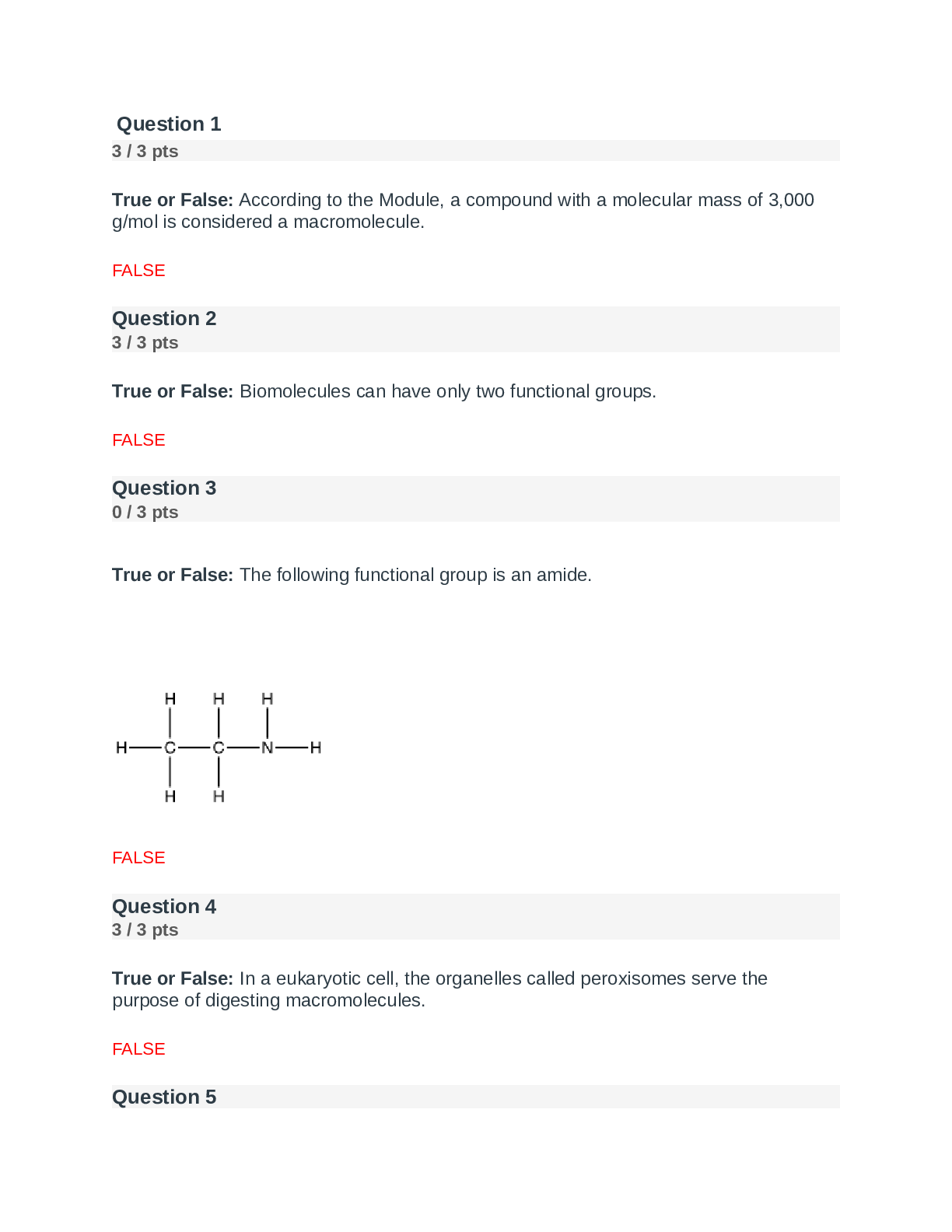

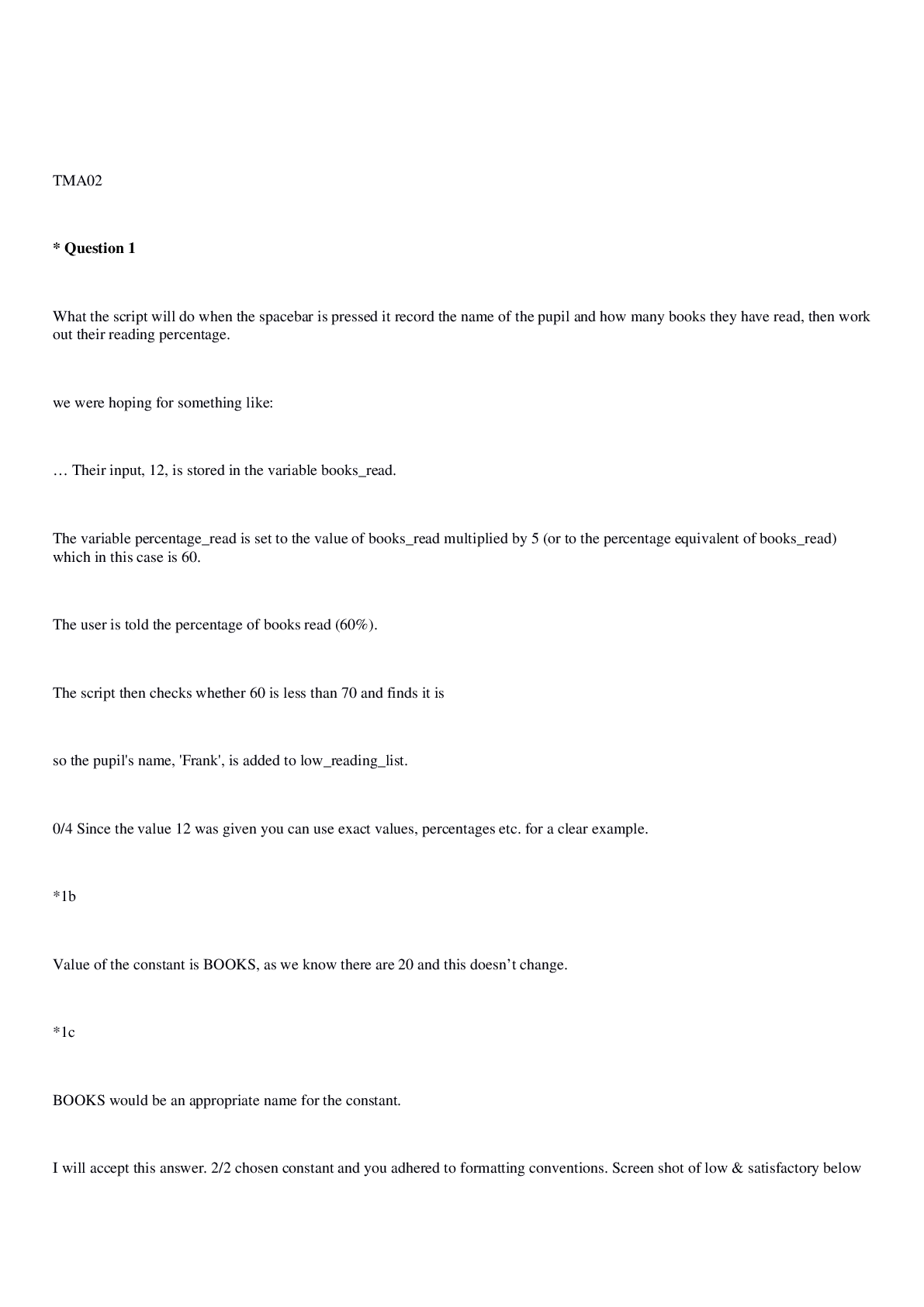
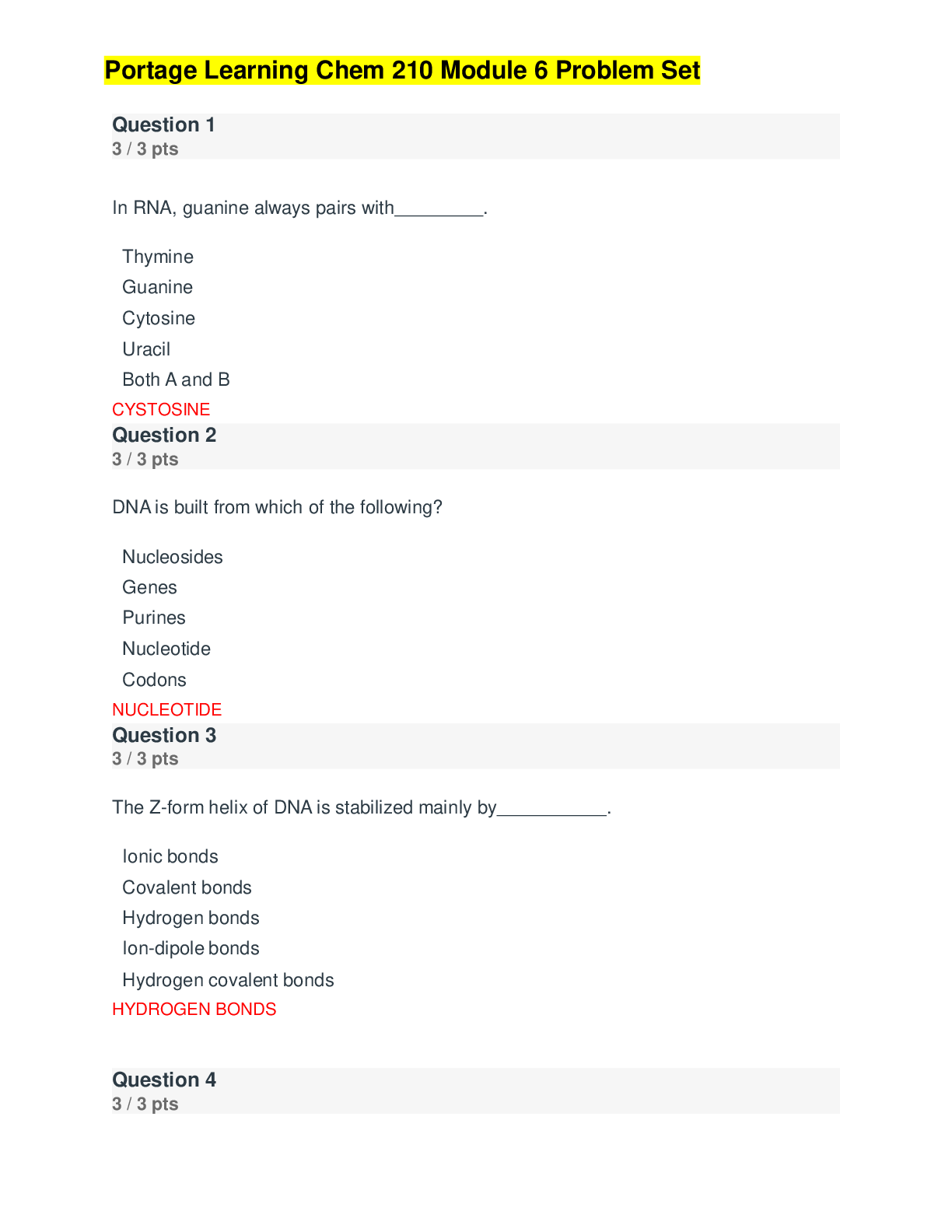
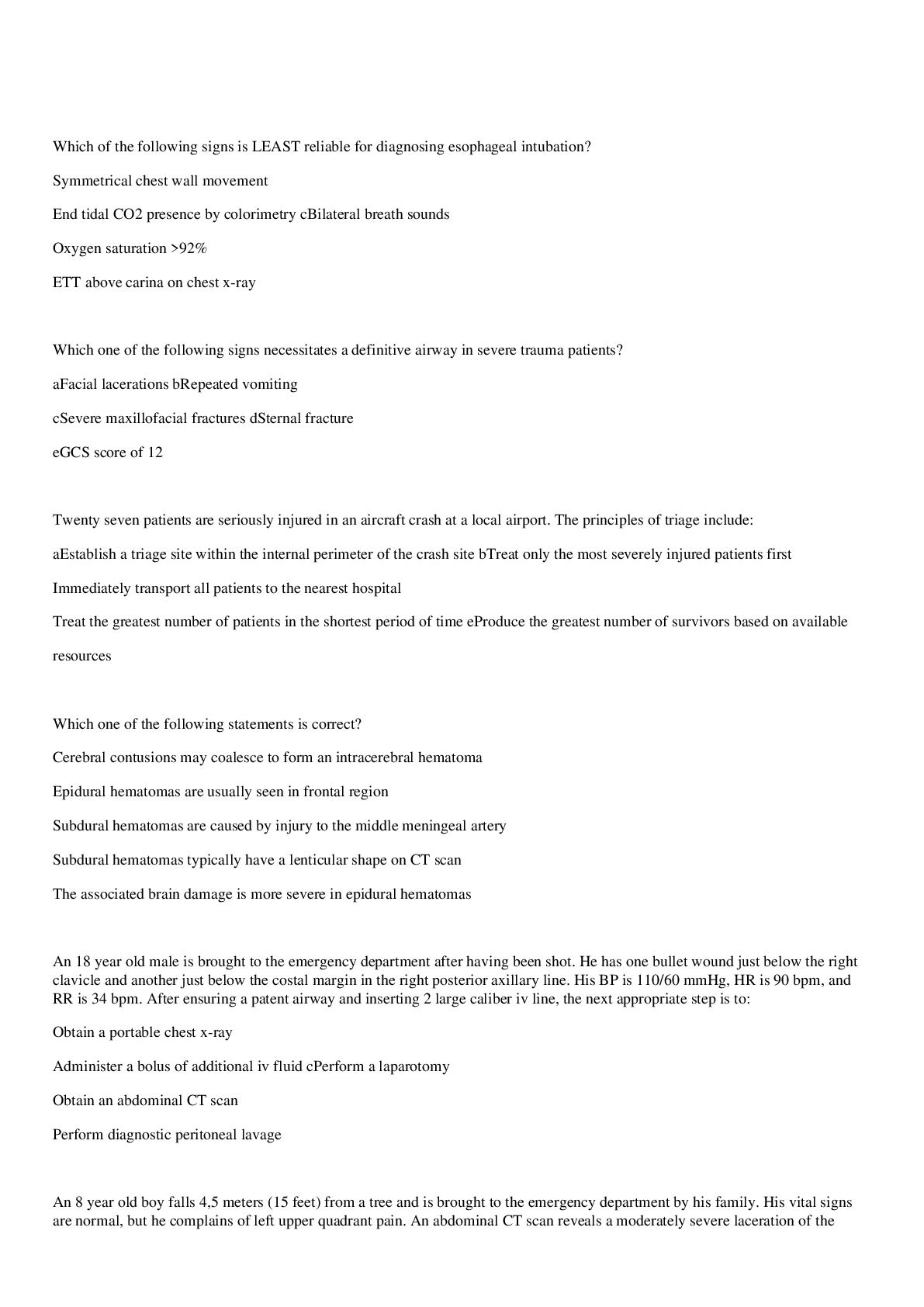
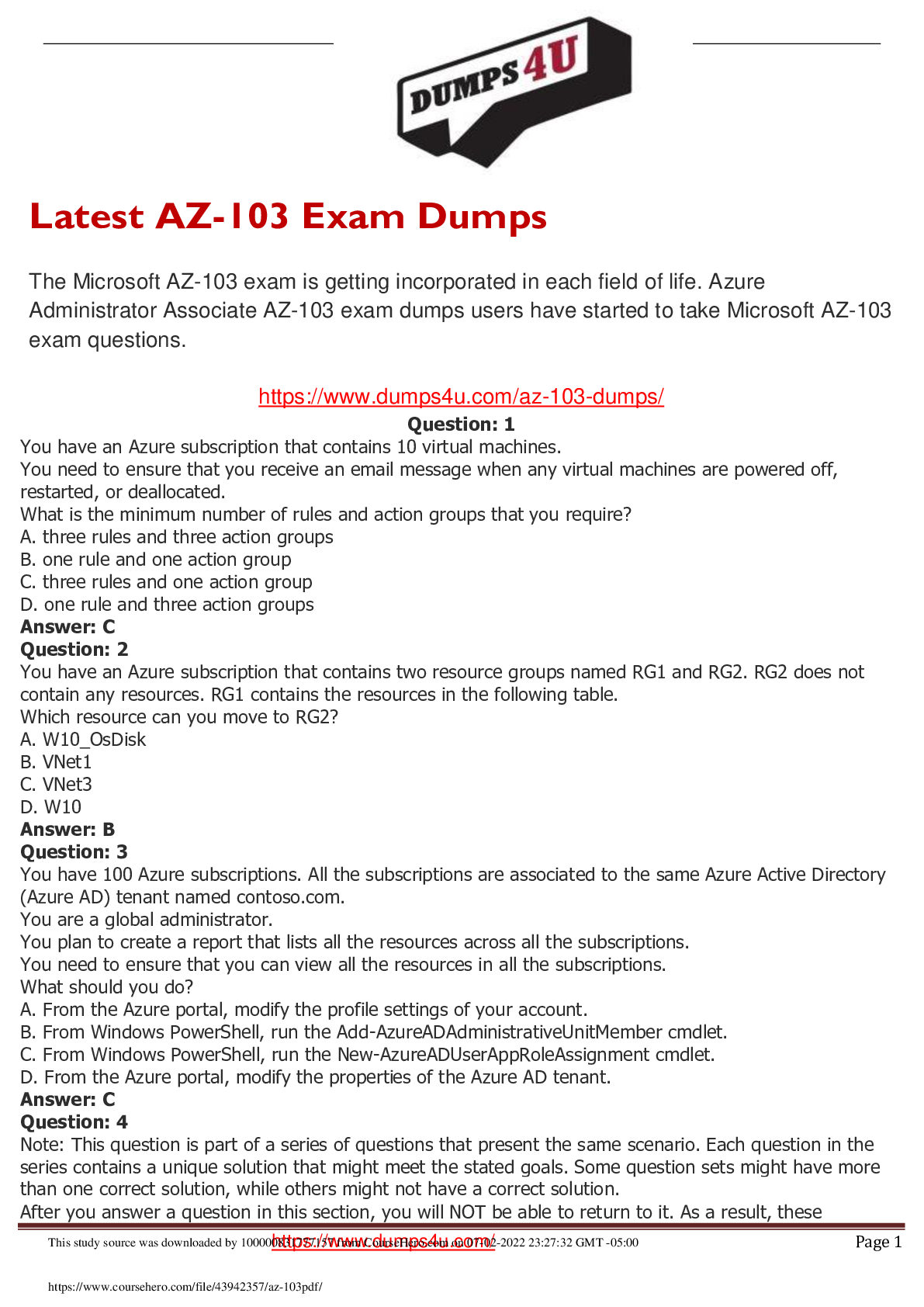
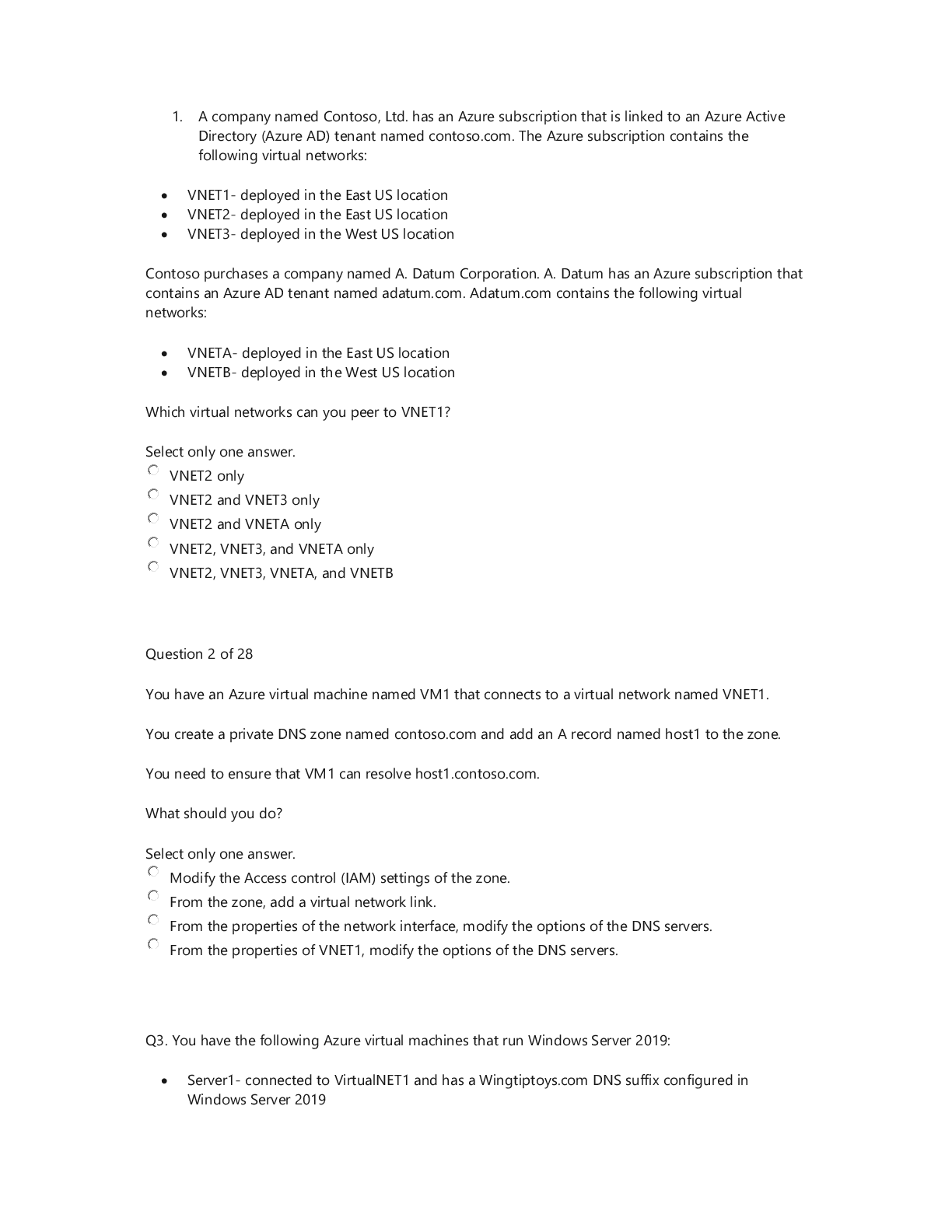

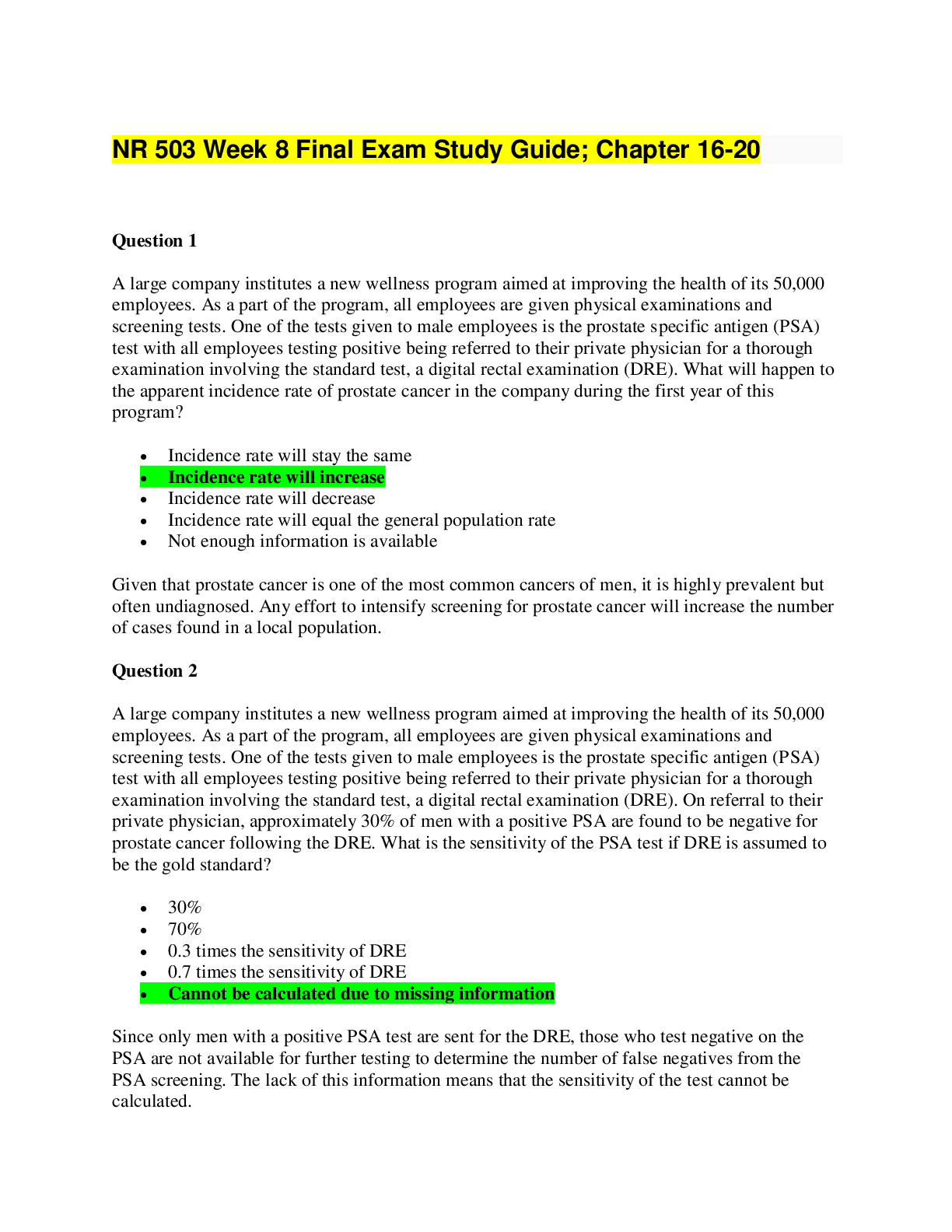
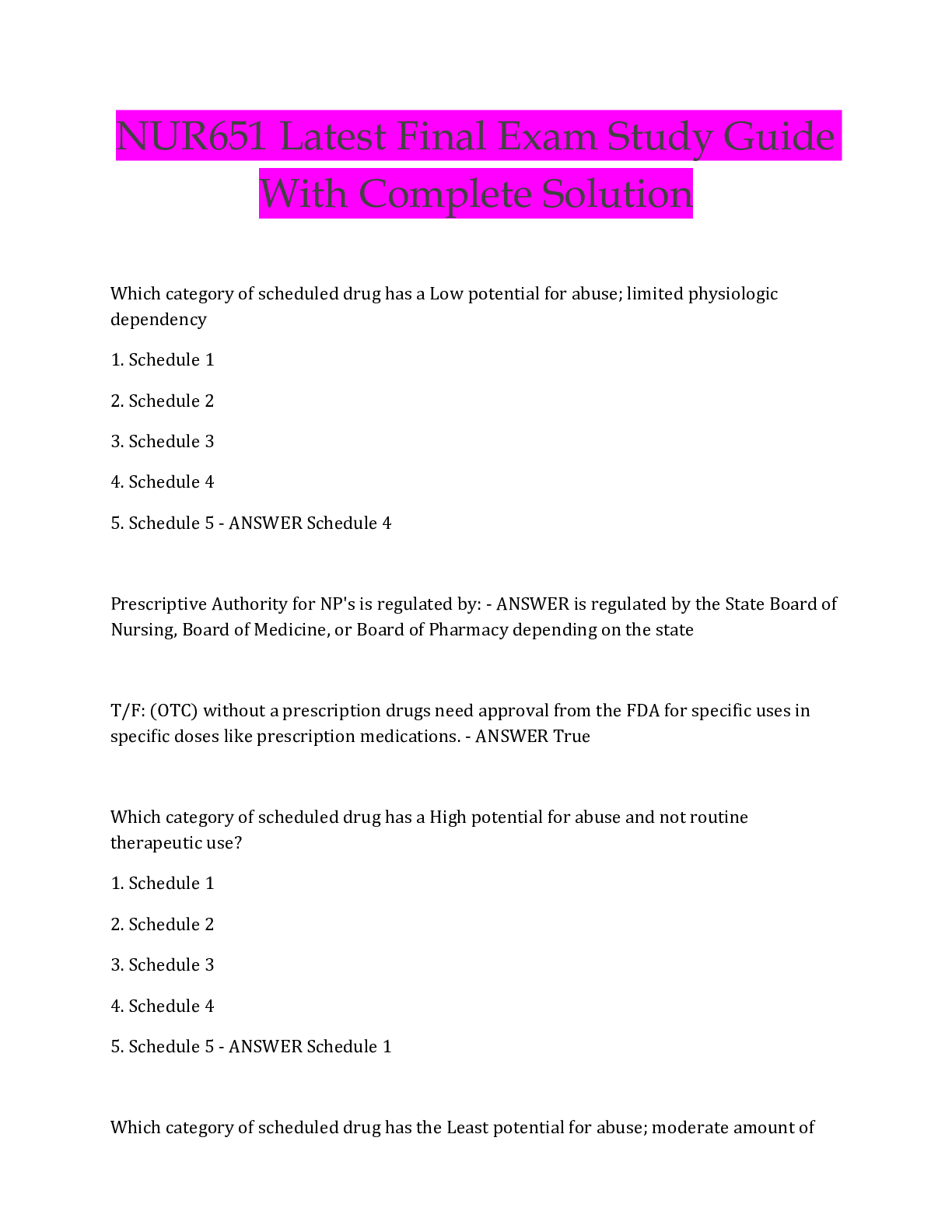
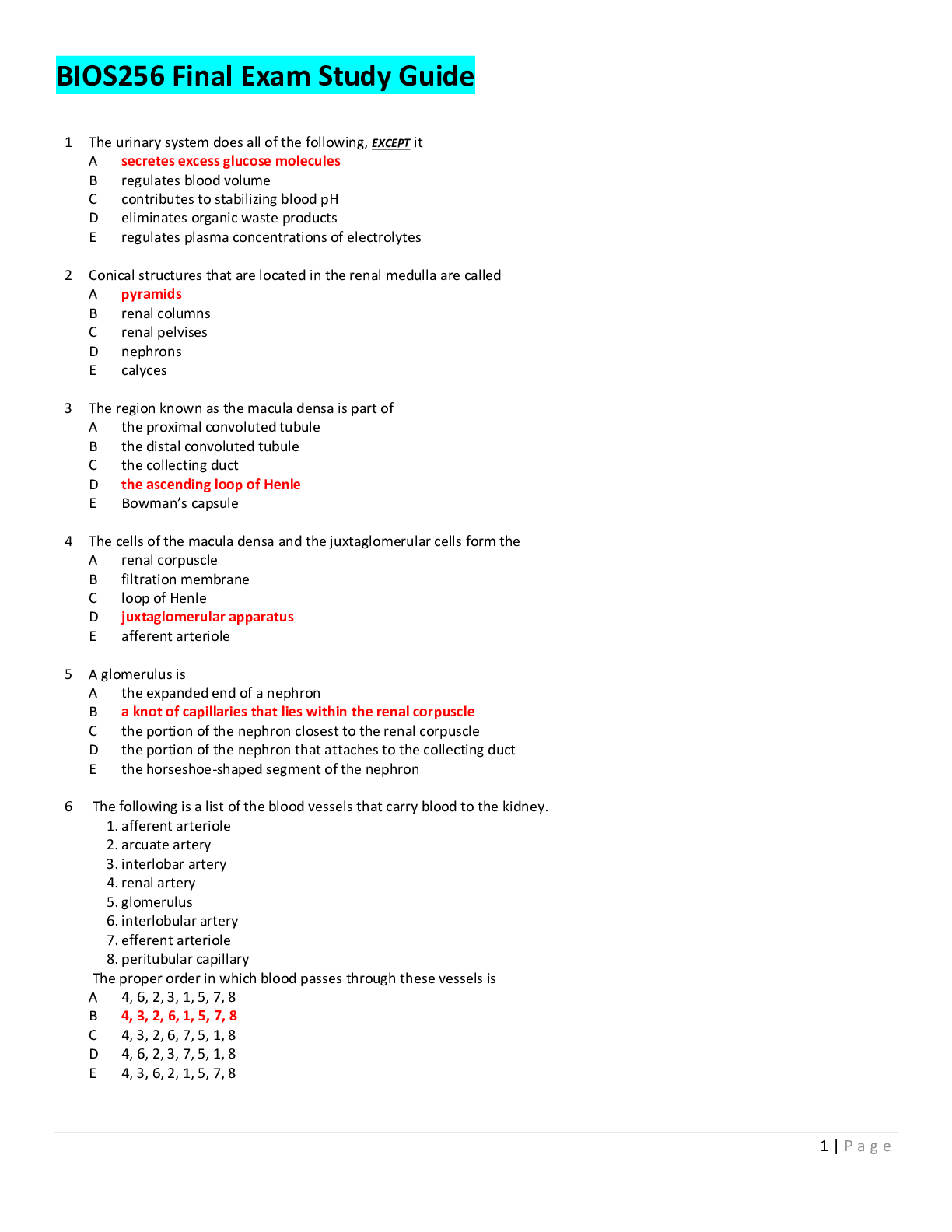
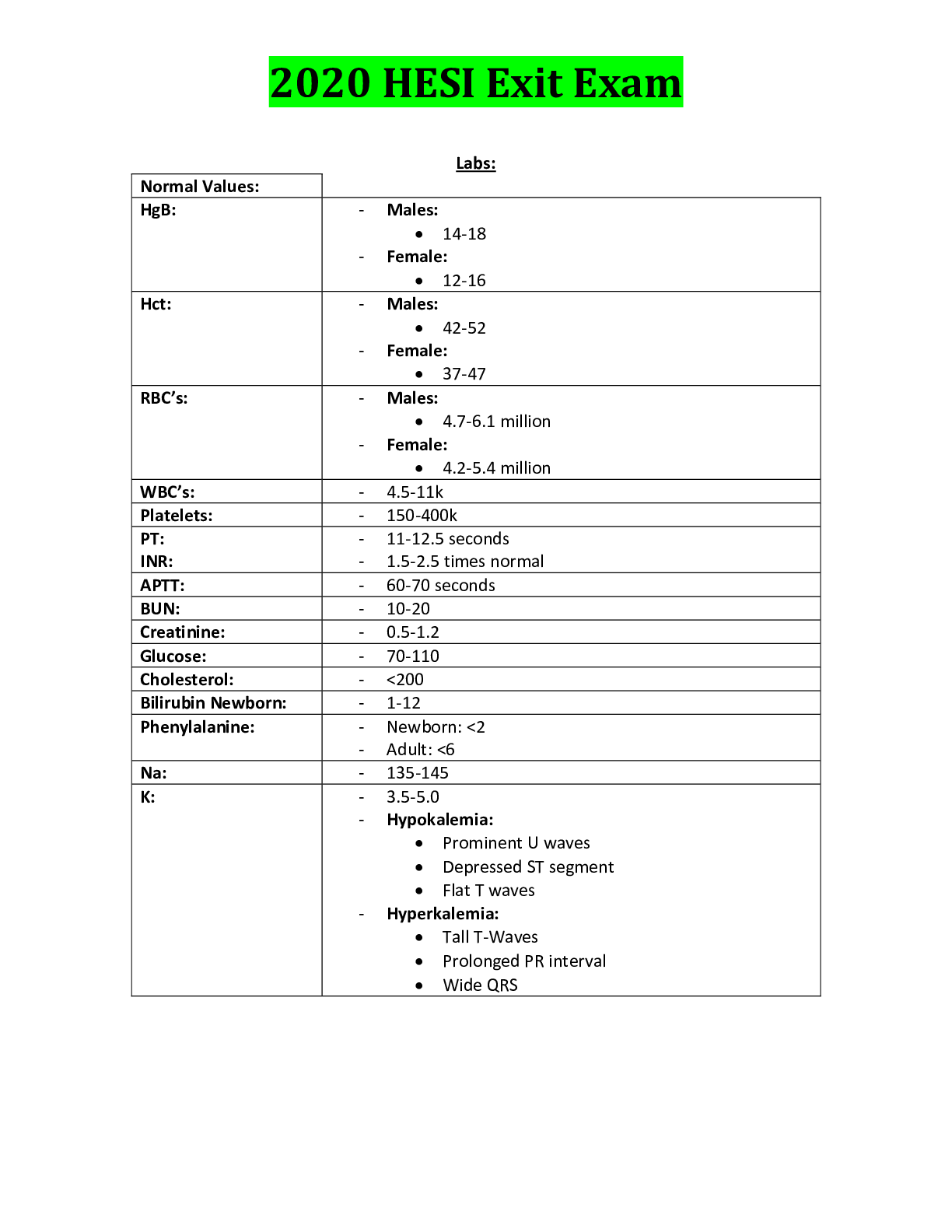
.png)
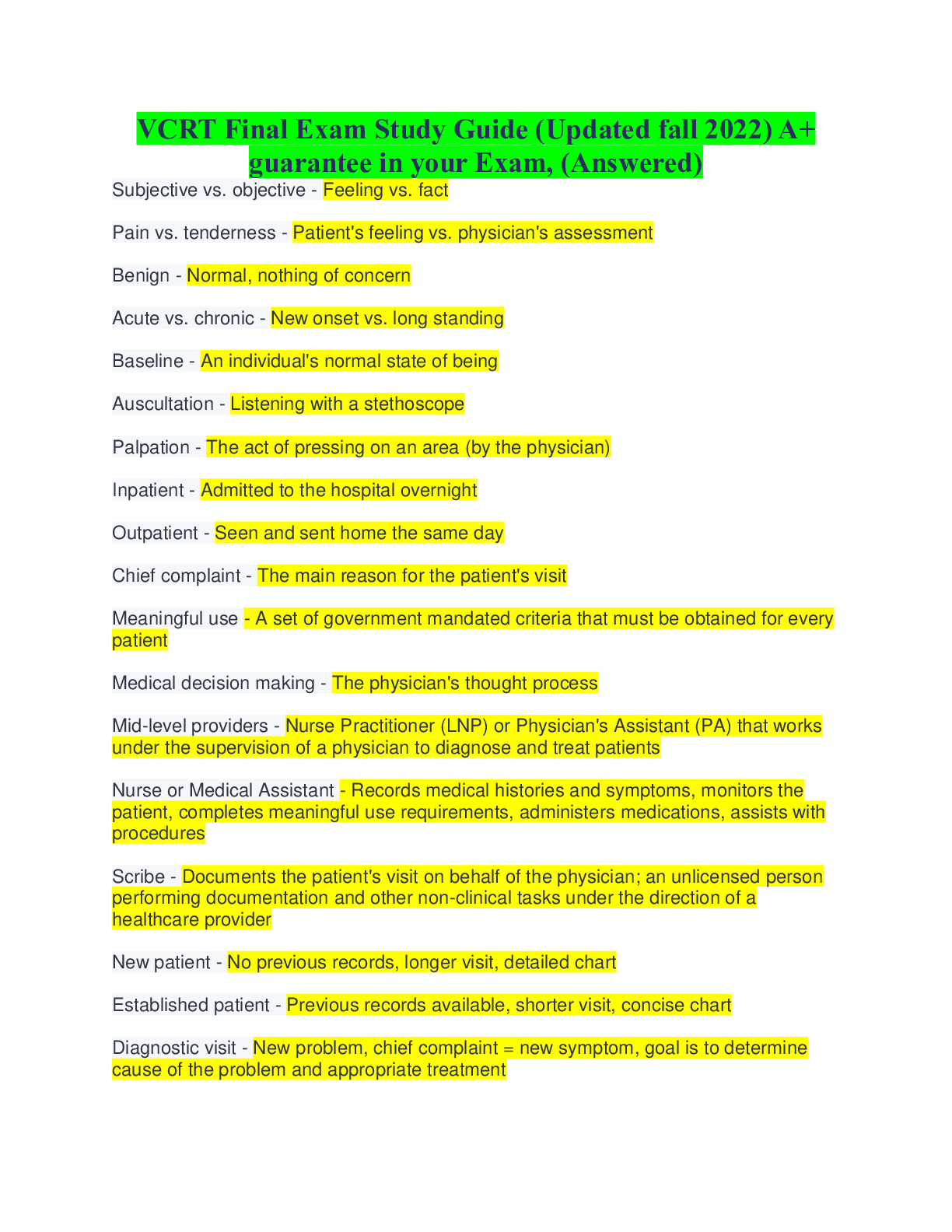
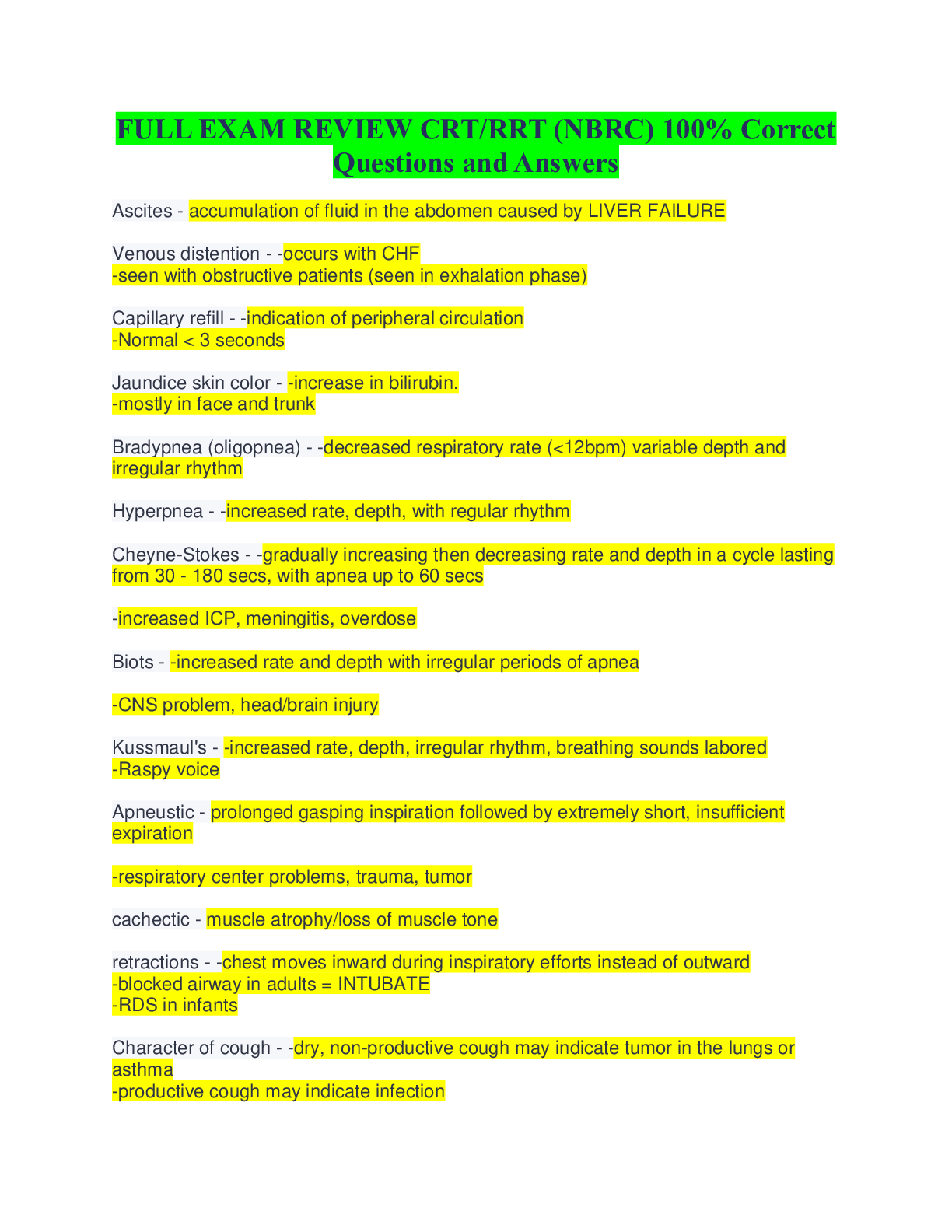
.png)

.png)
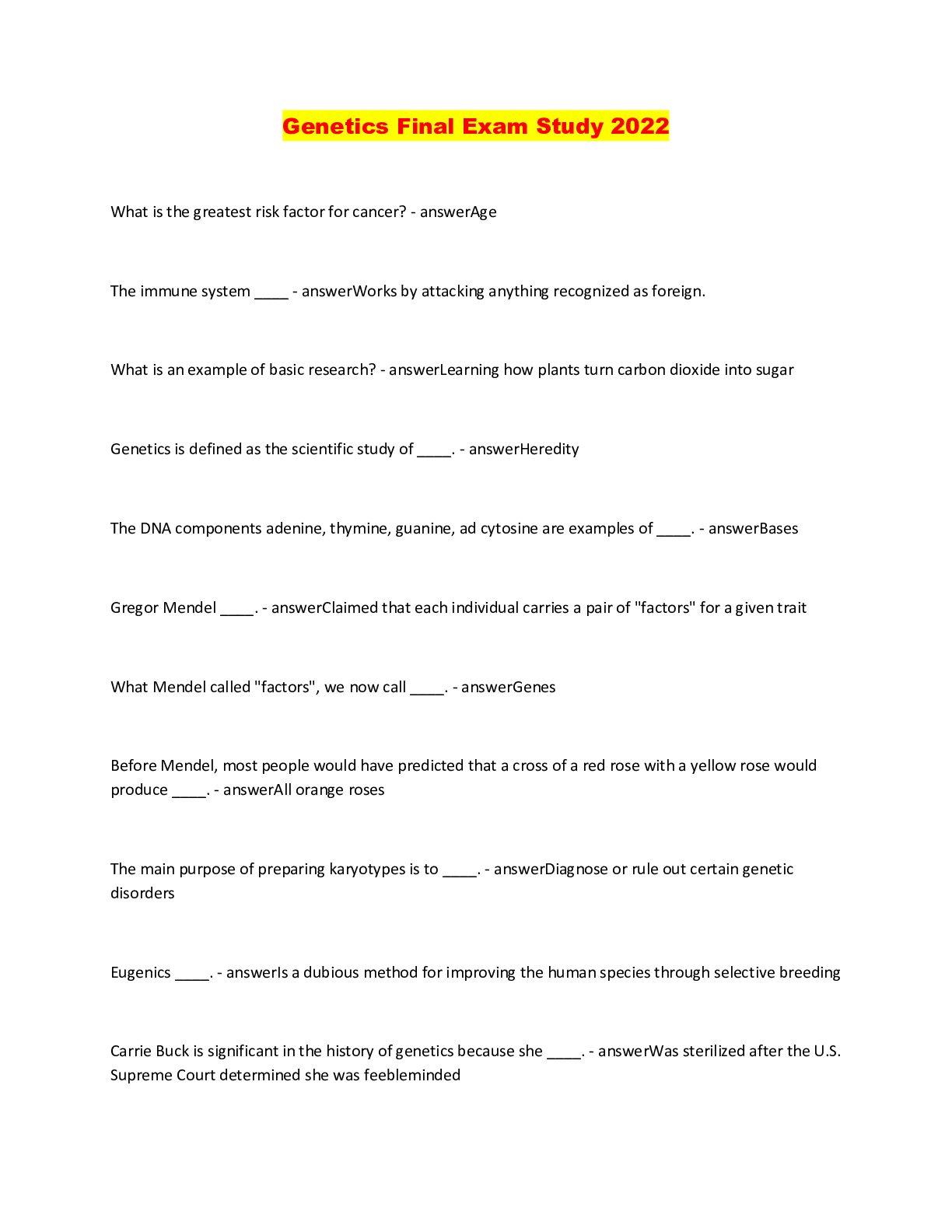
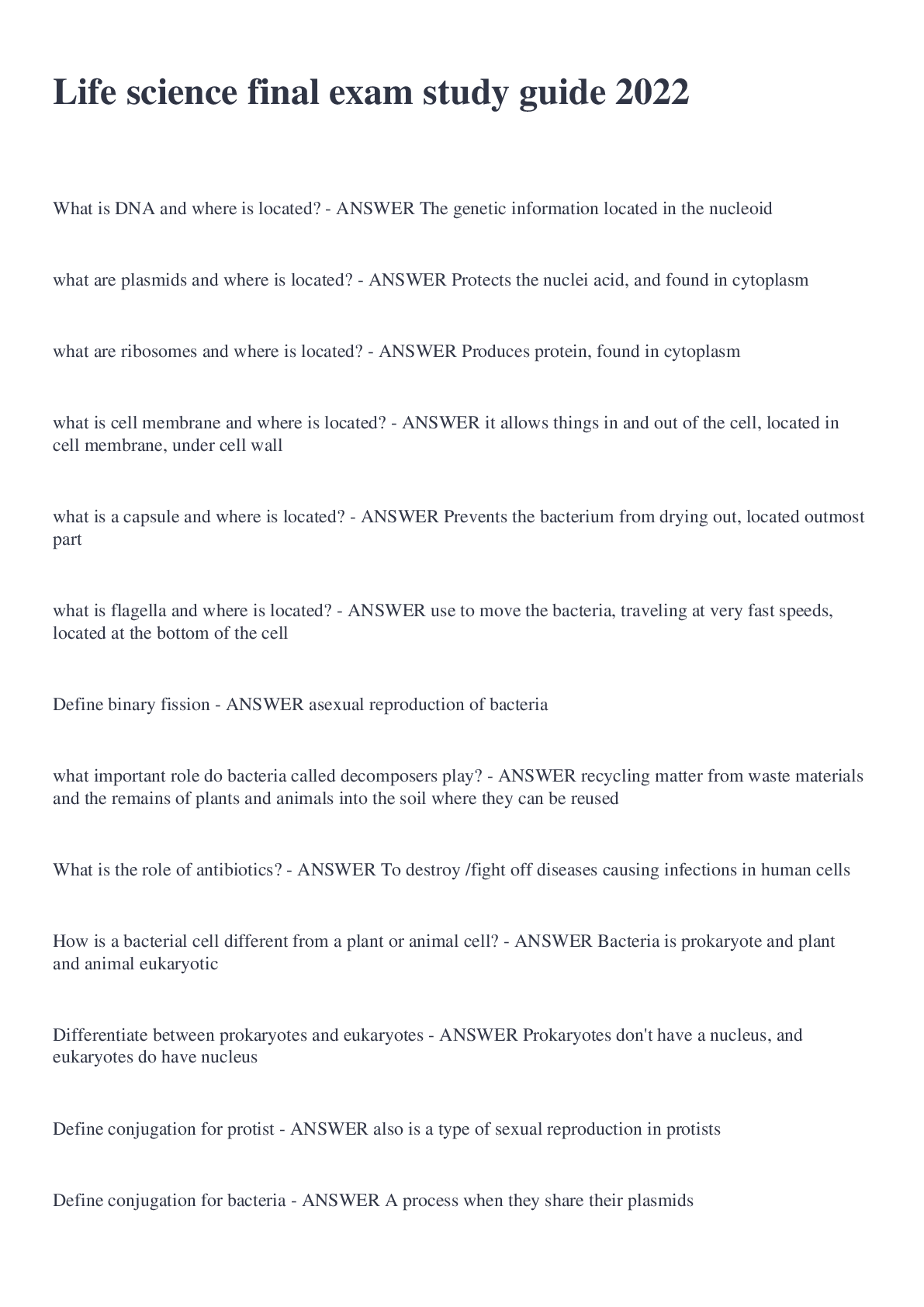
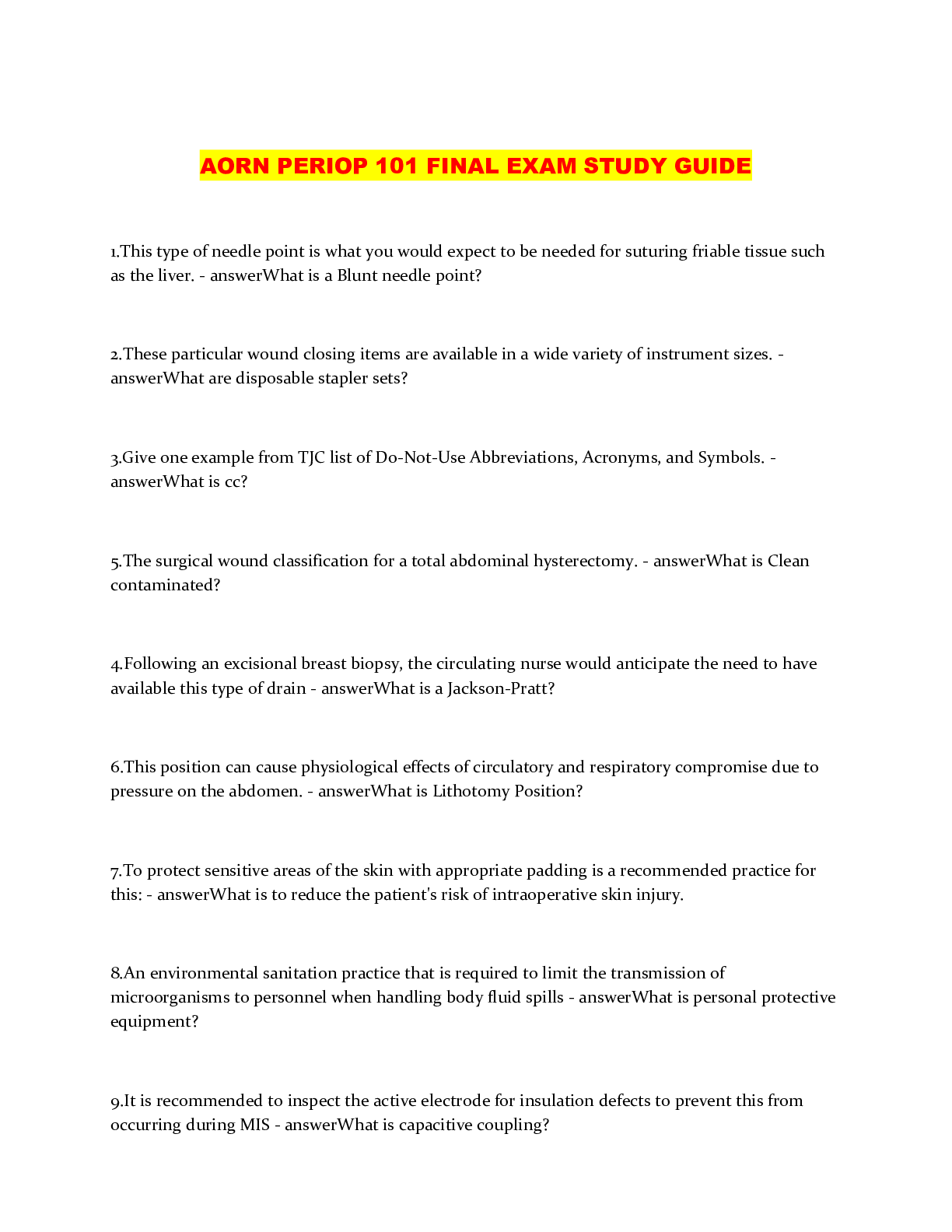
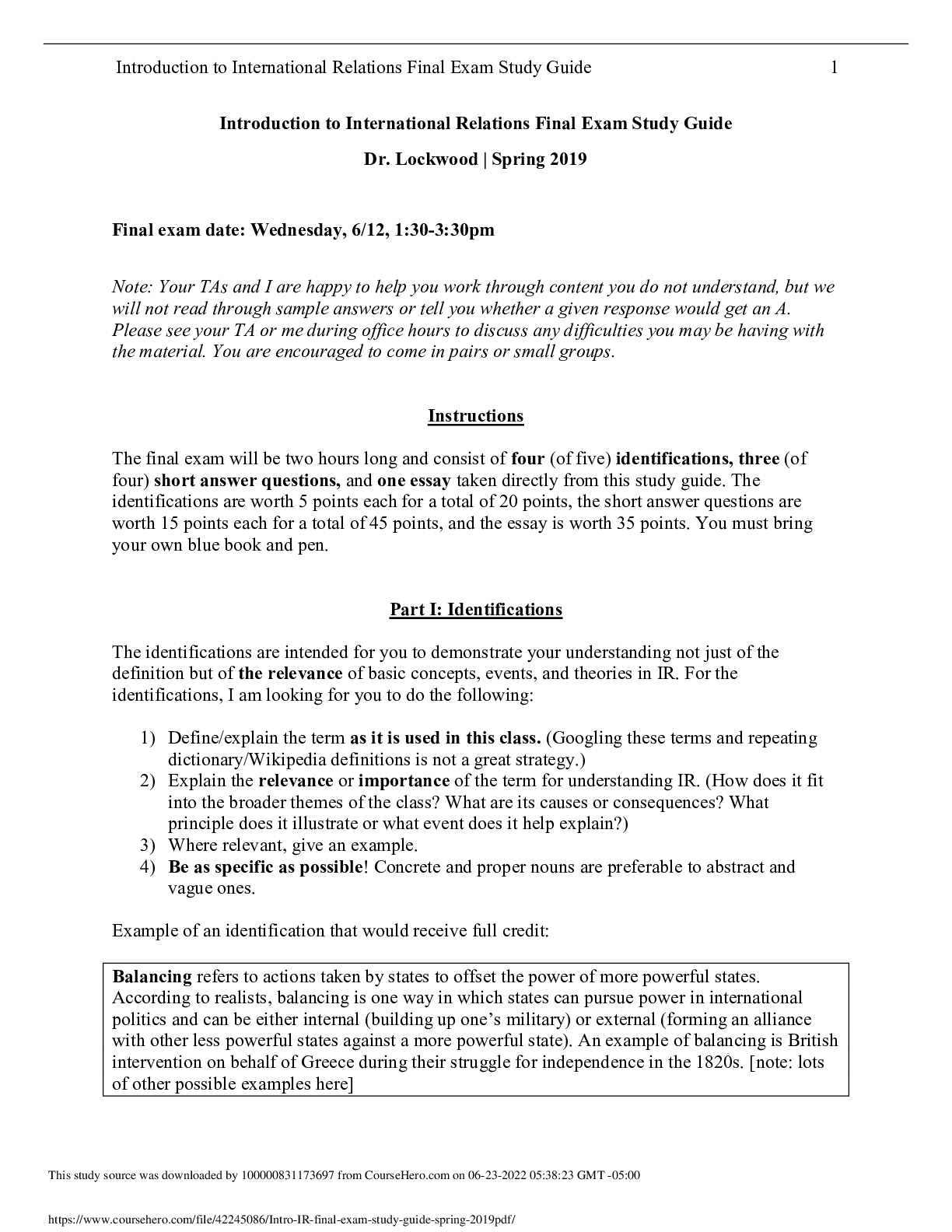
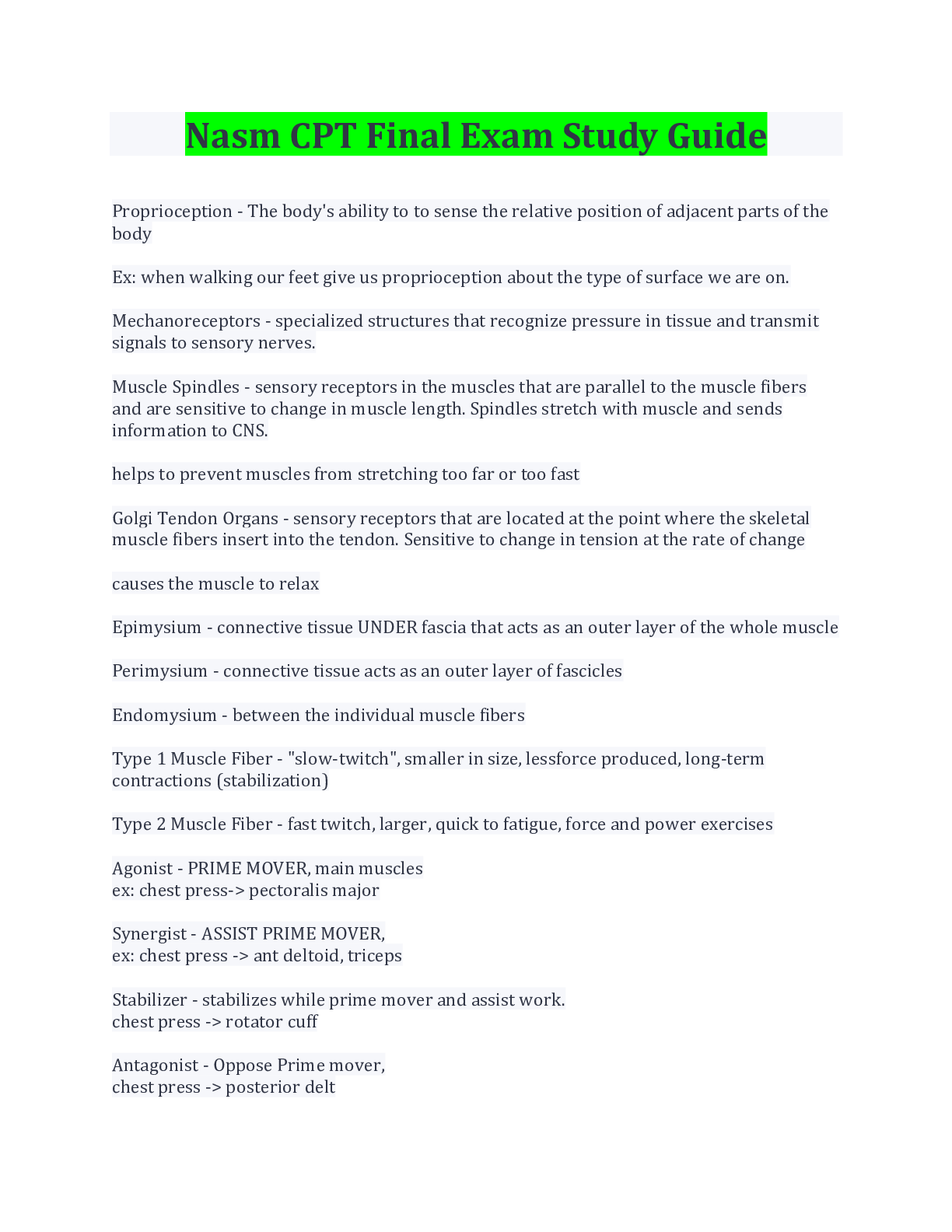

.png)
